|
 |
 Автор: Williams Автор: Williams
 Дата: 18 сентября 2020 Дата: 18 сентября 2020
 Просмотров: 909 Просмотров: 909 |
| |
Lindo What'sBest! v17.0.0.0 x64
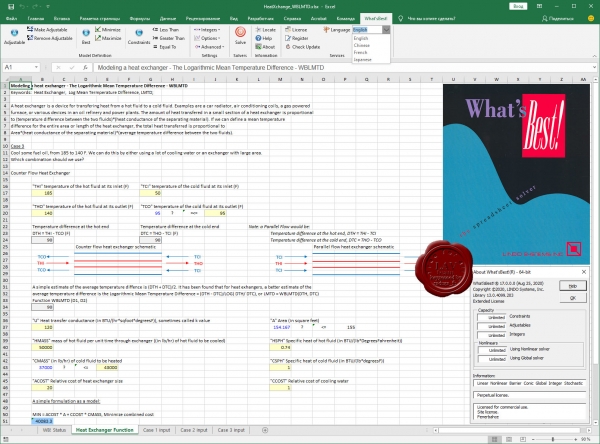
What'sBest! is an add-in to Excel that allows you to build large scale optimization models in a free form layout within a spreadsheet. What'sBest! combines the proven power of Linear, Nonlinear (convex and nonconvex/Global), Quadratic, Quadratically Constrained, Second Order Cone, Semi-Definite, Stochastic, and Integer optimization with Microsoft Excel -- the most popular and flexible business modeling environment in use today. The recently released What'sBest! 15.0 includes a number of significant enhancements and new features.
Enhancements to the Simplex solvers boost performance on linear models. Large models solve an average of 20% faster using primal simplex and 15% faster for dual simplex.
New symmetry detection capabilities dramatically reduce the time required to prove optimality on certain classes of models with integer variables. Performance has been improved on Markowitz portfolio problems with minimum buy quantities, and/or limit on number of instruments at nonzero level. Other enhancements provide faster solutions on certain task assignment-like models.
Stability and robustness of the Global solver has been improved through several enhancements to quadratic recognition and range reduction. Improved exploitation of convexity of certain ratio constraints, e.g., as found in heat exchanger network design problems.
Several new functions and constraint types are recognized, e.g., the =WBALLDIFF() All Different constraint, for general integer variables. The =WBALLDIFF() function allows one to specify a set of integer variables, such that each variable in the set must have a unique value, different from all other variables in the set. |
| |
 Читать статью дальше (комментариев - 1)
Читать статью дальше (комментариев - 1)
| |
|
 |
 Автор: Williams Автор: Williams
 Дата: 17 сентября 2020 Дата: 17 сентября 2020
 Просмотров: 468 Просмотров: 468 |
| |
Catherine Bertrand, Sophie Denimal, Marc Steinmann, Philippe Renard - Eurokarst 2018, Besançon
Advances in the Hydrogeology of Karst and Carbonate Reservoirs
Springer, 2020
pdf, 243 pages, english
ISBN: 978-3-030-14014-4
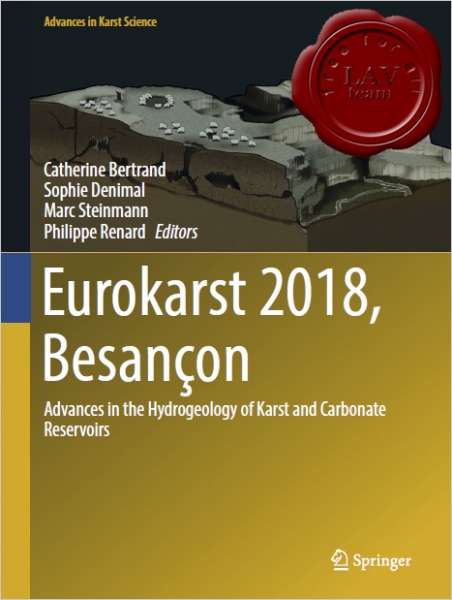
This book presents selected papers from the EuroKarst 2018 conference, which highlighted the latest advances in the field of Karst Hydrogeology and Carbonate Reservoirs. The event attracted more than 180 participants. From among their contributions, the papers were selected and subsequently reviewed by the scientific committee to ensure the highest possible quality. |
| |
 Читать статью дальше (комментариев - 1)
Читать статью дальше (комментариев - 1)
| |
|
 |
 Автор: Williams Автор: Williams
 Дата: 16 сентября 2020 Дата: 16 сентября 2020
 Просмотров: 2 020 Просмотров: 2 020 |
| |
Zeataline Projects PipeData-PRO v14.0.00.7
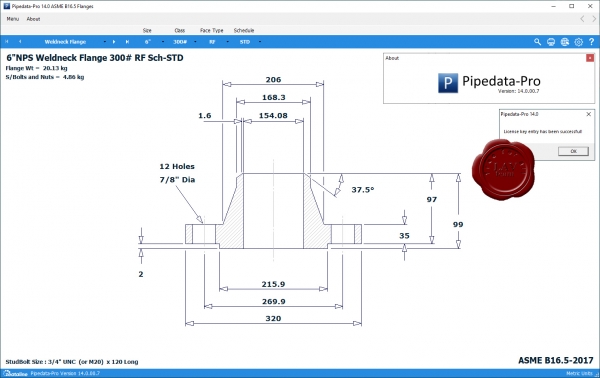
PipeData-PRO является простой в использовании компьютерной программой, предоставляющей доступ к обширной базе данных труб, трубопроводов, фланцев, клапанов и прочих проектных данных.
|
| |
 Читать статью дальше (комментариев - 16)
Читать статью дальше (комментариев - 16)
| |
|
 |
 Автор: Williams Автор: Williams
 Дата: 15 сентября 2020 Дата: 15 сентября 2020
 Просмотров: 2 262 Просмотров: 2 262 |
| |
Alain Dassargues - Hydrogeology: Groundwater Science and Engineering
CRC, 2019
pdf, 493 pages, english
ISBN-13: 978-1-4987-4400-3

One might wonder whether we need yet another hydrogeology textbook. Before we express our opinion on this, let us evaluate what this new book has to offer. Written for an undergraduate and graduate audience, it brings together both the science and the engineering of hydrogeology. The author draws on his more than 30 years of experience as a scientist and engineer, but especially as a lecturer in courses on hydrogeology and groundwater modeling. As a professor in hydrogeology and environmental geology at the University of Liège in Belgium and part-time professor at KU Leuven (1995–2012), his extensive teaching experience has clearly shaped this highly accessible text. The book covers a wide range of topics, from the basics of groundwater occurrence and flow (Chapters 1–4 and 9) to conductivity measurements (Chapter 5), land subsidence (Chapter 6), chemistry and contaminant transport (Chapters 7–10), heat transfer (Chapter 11), and modeling (Chapters 12 and 13).
The preamble to Chapter 1 sets out the philosophy of the author for the science and engineering of groundwater, which has to serve modern approaches such as, for example, the water-energy-food nexus for managing our water resources. Definitions are provided for hydrogeology and groundwater. For the latter, a contemporary definition of "water underground in pore spaces and fractures” is used. This deviates from the classical definition of "subsurface water beneath the water table,” which was already recognized as a limitation by Freeze and Cherry (1979), since the "study of groundwater must rest on an understanding of the subsurface water regime in a broader sense.” Chapter 2 presents a comprehensive overview of the hydrological cycle, including sections on evapotranspiration, recharge, and baseflow estimation methods. Chapter 3 elaborates the basic terminology of the science of groundwater and its occurrence in different geological environments. Next, Chapter 4 details the main laws and concepts of saturated groundwater flow. The book follows a mathematical and quantitative presentation approach, which is evident in this chapter from the very clear step-by-step derivation of the groundwater flow equations for steady and transient state in two and three dimensions for confined and unconfined conditions. Remarkable is the absence of the typical discussion in hydrogeology textbooks of Tothian groundwater flow systems. Instead, a strong warning is issued that the analytical approaches to calculate flownets "are of limited interest and can even be misleading” because the water table is often prescribed and isotropic-homogeneous conditions are assumed (see also Bresciani et al. 2016). Chapter 5, "Hydraulic Conductivity Measurements,” is one of the chapters that stands out in this textbook. With 47 pages, this chapter provides an excellent overview of the typical laboratory, slug, and pumping tests. However, it also contains a section on less well-known methods, including the use of air permeameter measurements on outcrops or coring material. Chapter 6 is a succinct and interesting summary of the coupling of geomechanics and groundwater flow, describing the physical relationships between land subsidence and pumping. It also illustrates this appropriately through five case studies of sinking cities. Chapter 7 is a solid "Introduction to Groundwater Quality and Hydrochemistry,” as its title suggests. In addition, it also discusses groundwater quality standards and sampling and monitoring strategies. Chapter 8 is the second highlight of this book. With 88 pages and 228 references, it is an outstanding primer on contaminant transport. It presents and discusses the physical and chemical processes affecting solutes in groundwater, while solute transport equations are rigorously developed. Other sections expand on non-aqueous phase liquid (NAPL) transport, remediation, tracer tests, transport and residence times, the use of isotopes and environmental tracers, and, finally, vulnerability and protection of groundwater. Chapter 9 concisely discusses flow and transport processes in partially saturated media. The corresponding equations are explained in detail. Similarly, Chapter 10 on "Salinization and Density Dependent Groundwater Flow and Transport” also includes the formulation of the respective equations. Chapter 11 on "Heat Transfer in Aquifers and Shallow Geothermy” is a welcome extension of the standard hydrogeological topics generally presented in groundwater textbooks. The use of heat data, as available from new sensors, is strongly increasing in hydrogeology, such as in groundwater–surface water interaction studies and tracer tests. Heat-based methods should be a standard topic in current hydrogeology teaching and therefore in any hydrogeology textbook. Interestingly, the discussion on the use of heat for flux estimation is extended with a description of the characteristics of different shallow thermal energy storage systems. The importance is stressed by the author in stating: "More generally, the transition toward renewable energy and power supplies necessitates increasingly more projects involving the underground storage of gas (methane, hydrogen, compressed air, and CO2), water and heat. Hydrogeologists are key actors in these projects.” With its total of 114 pages and almost 300 references, the last two chapters (12 and 13) are the final highlight of this book. Those chapters clearly elevate this textbook. On the one side, they are beneficial for an introductory hydrogeology course, and on the other side they are also highly relevant for an advanced groundwater modeling course. Likewise, they will serve the professional with a reference guide on the different methods for groundwater flow and transport modeling. Chapter 12 discusses the purpose of modeling, conceptual model building, initial and boundary conditions, model design and data, calibration, validation, sensitivity analysis, and inverse modeling. Moreover, advanced topics of geostatistical modeling and probability, including multiple-point geostatistics and Bayesian learning, are outlined. In the last chapter, the author discusses the mathematical basis of different numerical techniques for modeling groundwater flow and transport. In addition to the standard finite-difference (MODFLOW) technique, he also explains the finite-element and finite-volume methods and the whole gamut of numerical methods for solute transport.
In a field in which researchers are becoming increasingly specialized, it is a rare feat to have a single-author text covering such a wide range of topics. The style of writing is therefore consistent throughout the book, which is especially apparent in the focus on quantification and the mathematical rigor. This makes the book relevant, not only to its intended audience of undergraduate and graduate students, but also to postgraduates and researchers from other disciplines as a broad introduction to the field of hydrogeology. Finally, its highly up-to-date literature provides us with a reference for years to come.
While the book is comprehensive, it is not complete. The author has made clear choices: groundwater biology, groundwater-dependent ecosystems, groundwater–surface water interaction, hydrogeophysics, and management hardly feature in this book. As an educational tool, its structured style and clear black-and-white figures make it very attractive. On the other hand, it lacks review questions and calculation examples. The book is available in hardback and e-book, and a version in French will be published soon.
To conclude, we return to the initial question: every new textbook on hydrogeology is a further marker of the development of the science and practice of hydrogeology. Although no single textbook can ever be complete, the diversity of texts makes the field of hydrogeology rich. These textbooks capture the expertise of decades of research and teaching. Therefore, they not only become a giant’s shoulder to stand on for a new generation of hydrogeologists, but above all they are a celebration of the steady progress in hydrogeological science. |
| |
 Читать статью дальше (комментариев - 11)
Читать статью дальше (комментариев - 11)
| |
|
 |
 Автор: Williams Автор: Williams
 Дата: 14 сентября 2020 Дата: 14 сентября 2020
 Просмотров: 1 090 Просмотров: 1 090 |
| |
Howden Group (ex. Chasm Consulting) PumpSim Premium v3.1.2.6 build 30/06/2020
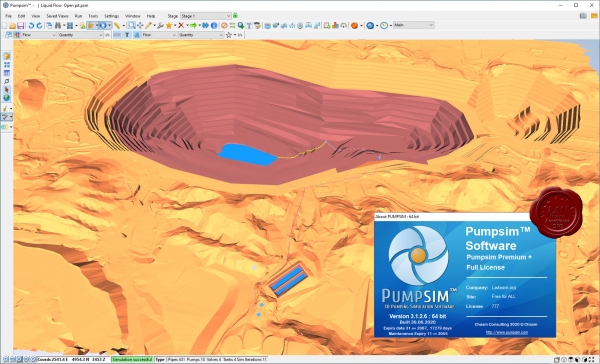
As part of Howden’s strategy to become the world’s leading provider of mine ventilation solutions, we are pleased to announce the acquisition of Chasm Consulting and its world leading products Ventsim/PumpSim. Providing industry-leading 3D design and simulation capability, the Ventsim/PumpSim software is widely used among the global mine ventilation community. Howden will now offer a full suite of solutions for mine ventilation, from modelling and design software to full turnkey projects including main and auxiliary fans, instrumentation, automation and Ventilation on Demand via the Simsmart product line.
PumpSim provides a full 3-dimensional dynamic environment to generate the most accurate pumping simulation and data from your network.
Use Pumpsim software to:
- Easily construct pipe models in true scale 3D.
- Estimate optimum pipe sizing.
- Model and simulate flow, pressure and pump performance.
- Import designs and solids from AutoCAD (DXF).
|
| |
 Читать статью дальше (комментариев - 7)
Читать статью дальше (комментариев - 7)
| |
|
 |
 Автор: Williams Автор: Williams
 Дата: 13 сентября 2020 Дата: 13 сентября 2020
 Просмотров: 1 398 Просмотров: 1 398 |
| |
Howden Group (ex. Chasm Consulting) Ventsim Design Premium v5.4.2.0
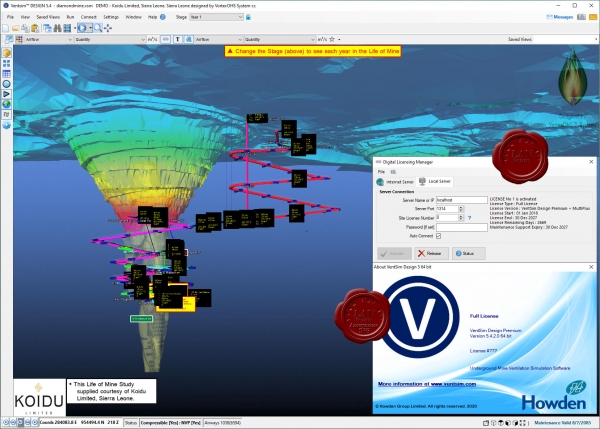
As part of Howden’s strategy to become the world’s leading provider of mine ventilation solutions, we are pleased to announce the acquisition of Chasm Consulting and its world leading products Ventsim/PumpSim. Providing industry-leading 3D design and simulation capability, the Ventsim/PumpSim software is widely used among the global mine ventilation community. Howden will now offer a full suite of solutions for mine ventilation, from modelling and design software to full turnkey projects including main and auxiliary fans, instrumentation, automation and Ventilation on Demand via the Simsmart product line.
Ventsim was originally introduced to mining operations in 1994 to help visually design, improve and optimize underground ventilation systems. It is now licensed to over 1000 mine sites, consultants, universities, governments and research agencies around the world. The new Ventsim Visual ventilation software was released in 2009 and offers a graphically rich and dynamic ventilation environment with many more features than the original Ventsim Classic. Ventsim Visual is available in three versions: Standard, Advanced and Premium.
Ventsim Visual Standard is a lower cost version based on incompressible flow simulation routines and includes dynamic animated 3D graphics showing real airway dimensions and shapes together with animated air flows. Colours show over 30 different data types including airflow, velocities, various pressures and costs. In addition, the Standard version comes with contaminant spread routines to help predict steady state flow of gases, dust, fumes and smoke.
Ventsim Visual Advanced uses advanced compressible flow modelling, including automatic density and fan curve adjustment, automatic natural ventilation simulation and prediction of temperatures and humidity due to rock strata, auto compression, diesel equipment and electric motors.
Ventsim Visual Premium includes all features of Ventsim Visual Advanced as well as VentFIRE fire simulation, VentLog ventilation survey record software, and the optional LiveView remote data connection and display module. |
| |
 Читать статью дальше (комментариев - 5)
Читать статью дальше (комментариев - 5)
| |
|
 |
 Автор: Williams Автор: Williams
 Дата: 12 сентября 2020 Дата: 12 сентября 2020
 Просмотров: 1 493 Просмотров: 1 493 |
| |
Jung-Chul Eun - Handbook of Engineering Practice of Materials and Corrosion
Springer, 2019
pdf, 912 pages, english
ISBN: 978-3-030-36429-8
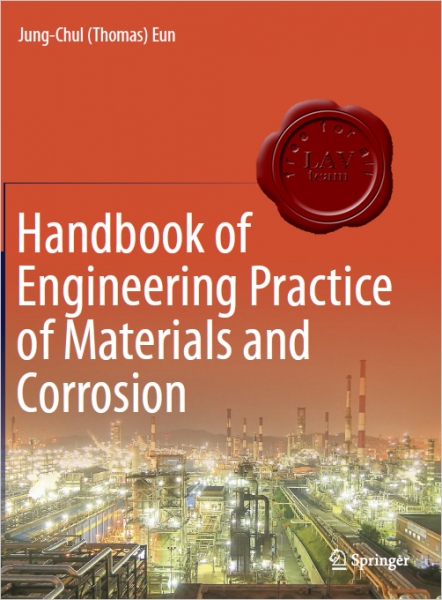
The main purpose of this guidebook is to suggest effective engineering data which are based on the requirements in several industrial codes, standards, regulations, specifications, and regulations, such as ASME, ASTM, API, ANSI, AWS, NACE, MSS, NFPA, TEMA, PIP, NBIC, OSHA, other American standards, CSA, and foreign standards including typical requirements and recommendations in company/project specifications. One of the major purposes is to introduce practical references for a checklist as well as more detailed engineering work in one location and to provide the following:
- Typically used project’s standards, guidelines, and application scope which are not covered in industrial codes and standards;
- Engineering practice and experience for the limitations of codes and standards;
- Engineering suggestions and test results from journals and papers with new technologies;
- Case studies and various reference resources;
- Correct recognition and effective spec deviation through various comparisons.
All information in industrial codes and standards are based on the current version unless otherwise specified and except some foreign standards. All mechanical data which are shown in this book are for reference only. Therefore, for detail engineering of mechanical design, it is advised to find the applicable codes and standards in accordance with the project requirement and/or process conditions. Most codes and standards have the section for the reference standards which are related with themselves. In some cases, the reference standards may indicate still old versions. The unit conversions in this book are from conversion calculation or directly each code and standard. Therefore, some converted values between the similar codes and standards may not show the same numbers in this book because the committees of codes and standards have been pursuing unit conversion by their own rounding-up system.
Many tables and figures are directly quoted from the codes and standards; however, some commentary notes which are based on the author’s experience and lessons learned are added as footnotes under the tables and figures in order to optimize engineering work, promote the successful use of the full contents, minimize error and mistake, and suggest for the next version. All specified para. (paragraphs), Fig. (figures), and tables are based on this book unless otherwise noted the directly quoted code or standard. Users and readers may be able to apply "should or may” to "must/shall or should” for the requirements in this book when the user wants to utilize the contents for the project specifications. |
| |
 Читать статью дальше (комментариев - 8)
Читать статью дальше (комментариев - 8)
| |
|
 |
 Автор: Williams Автор: Williams
 Дата: 11 сентября 2020 Дата: 11 сентября 2020
 Просмотров: 1 411 Просмотров: 1 411 |
| |
Golden Software Grapher v16.4.432 x32+x64
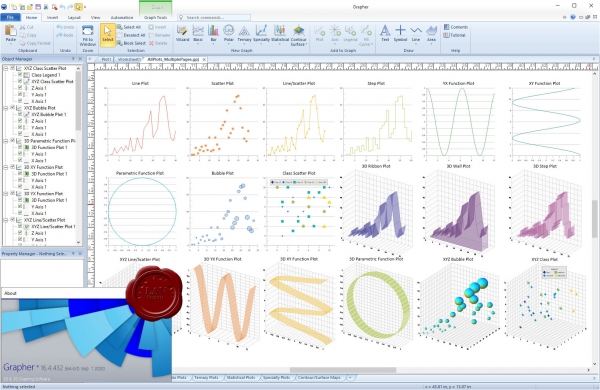
Golden Software Grapher - мощный и одновременно простой в использовании графический пакет, позволяющий быстро создавать высококачественные графики. Grapher позволяет строить более 54 видов двухмерных и трёхмерных графиков. Кроме того, вы можете настраивать любую часть графика или создавать свои собственные графики, наилучшим образом описывающие ваши данные. Программа содержит 4 типа двухмерных графиков: линейные, столбчатые, полярные и специальные. Все эти типы графиков доступны и в трёхмерном исполнении. Если вам требуется отразить дополнительную переменную, вы можете воспользоваться графиками 3D XYZ, контурными картами или картами поверхности.
Спецификации Grapher:
- Разноцветные столбчатые и пузырьковые диаграммы.
- Градиентная заливка для всех объектов.
- На графиках 3D XYZ можно добавлять вертикальные линии сетки.
- Настройка любой части графика под вашу уникальную ситуацию.
- Простое создание своих собственных пользовательских графиков с помощью мастера.
- Создание шаблонов и их сохранение для использования на других графиках.
- Разбиение длинных подписей к осям.
- Автоматизация процесса постороения графиков.
- Запись процессов графика внутри сценария.
- Экспортирование графиков для использования в презентации и публикации в одном из многочисленных форматов, в том числе векторных PDF, EMF, EPS и т.д.
|
| |
 Читать статью дальше (комментариев - 8)
Читать статью дальше (комментариев - 8)
| |
|
 |
| ПОИСК ПО САЙТУ |
 |
|
 |
|